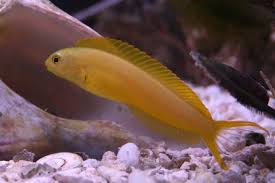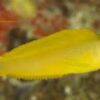The Dragon in Mythological Stories of Strength and Power

In the rich tapestry of global mythologies, dragons have consistently been depicted as powerful, enigmatic beings that often embody strength, dominance, and the authority of rulers. However, nowhere are these qualities as central to the symbol of the dragon as in Chinese mythology. In Chinese cultural history, the dragon is not only a symbol of immense strength but also a manifestation of the supernatural forces that govern the universe. Dragons in Chinese mythology are revered as creatures with the power to shape the heavens, control the elements, and influence the fate of emperors and nations.
This article delves into the role of the dragon in Chinese mythological stories, highlighting how these legendary creatures are portrayed as symbols of strength and power, central to the nation’s spiritual and cultural identity. From ancient imperial legends to mythological tales of the heavens, the dragon holds a critical position in understanding the notion of power and authority in Chinese folklore.
The Dragon as the Embodiment of Imperial Power
The dragon has long been associated with the imperial family in China, symbolizing the ruler’s divine right to govern. In fact, the term “Emperor of China” is often symbolically linked to the dragon itself. The imperial dragon was regarded as the “Son of Heaven,” with the emperor thought to be the earthly manifestation of the dragon’s power and authority. The dragon, with its association with strength, potency, and celestial will, was the emblem of the emperor’s legitimacy and role as a ruler chosen by the heavens to maintain order and stability.
In one of the earliest historical texts, the Records of the Grand Historian, the emperor is metaphorically referred to as a dragon, with the dragon’s power and authority extended to their governance. The emperor’s throne, known as the “Dragon Throne,” signified not only the ruler’s control over the land but also their divine right to rule with the dragon’s blessings. In this sense, the dragon represented ultimate authority, superior to that of earthly beings.
The association between dragons and power was further solidified through imperial art and iconography. The imperial seal, robes, and various royal insignia often featured dragon motifs, signifying the emperor’s position as the true ruler of the land, imbued with the dragon’s power to bring prosperity and security to the nation. These visual representations of the dragon symbolized the strength of the emperor’s rule, while the dragon itself was regarded as a spiritual protector of the throne.
Dragons as Guardians of the Natural World
Beyond their association with rulers, dragons also held considerable power in relation to the forces of nature. Chinese mythology often portrays dragons as guardians and controllers of water, especially rivers, lakes, and oceans. The most famous of these mythical creatures are the Dragon Kings—the deities of water who govern different bodies of water across the Chinese landscape. Each Dragon King is said to preside over a particular body of water, with the power to influence weather patterns, including the important seasonal rains necessary for agriculture.
According to ancient texts and folklore, the Dragon Kings were not only powerful beings who could control the flow of rivers and seas but also protectors of the land. They were seen as benevolent figures who brought the essential rains that nurtured crops and ensured prosperity. In these tales, the dragon’s power is equated with nature’s fertility and its ability to create life. When a drought struck, the people of China would pray to the Dragon Kings for rain, believing their power was the only force that could bring relief.
In contrast, dragons also had a more fearsome aspect when angered. If disturbed or disrespected, the dragons could unleash torrents of water that would flood entire regions, demonstrating their ability to wield destructive force as well as life-giving power. These depictions highlight the dual nature of the dragon as both a protector and a force of nature, capable of wielding its power in either creative or destructive ways.
The Legend of the Dragon Gate: Perseverance and Transformation
One of the most enduring and popular myths in Chinese folklore is the tale of the Dragon Gate, which reflects the power of transformation through perseverance. In this myth, a carp that swims upstream and manages to leap over the Dragon Gate waterfall will transform into a dragon. This myth emphasizes the idea of overcoming obstacles, achieving greatness, and harnessing strength through determination and perseverance.
The Dragon Gate legend serves as a powerful metaphor for personal growth, illustrating how one can transcend their current limitations by tapping into inner strength. In the context of Chinese culture, this story is often used to inspire individuals to strive for success, much like the carp striving to become a dragon. The dragon’s transformation from a humble carp is symbolic of achieving greatness and realizing one’s full potential, reflecting the idea that true power often arises from enduring challenges.
Additionally, the Dragon Gate story is frequently used in Chinese education as a motivational tale, encouraging individuals to pursue their goals with persistence and dedication. The tale of the dragon’s transformation suggests that strength is not inherent but is earned through effort, perseverance, and resilience.
Dragons and Heavenly Power in Chinese Mythology
Chinese mythology is replete with stories of dragons in the heavenly realms, particularly in relation to the deities and celestial beings who govern the universe. The dragon’s association with the heavens is a central theme in many myths, where dragons are seen as symbols of celestial power and intermediaries between the mortal and divine realms.
One of the most famous myths involving dragons and celestial power is the story of the Dragon Kings and their connection to the Jade Emperor (玉皇大帝), the ruler of Heaven. According to legend, the Dragon Kings are loyal servants of the Jade Emperor, tasked with ensuring the proper functioning of natural forces such as rain, winds, and tides. The Jade Emperor, being the supreme ruler of Heaven, is often depicted riding or accompanied by dragons, highlighting their role as agents of divine power.
The dragons in these tales are depicted as divine creatures who maintain balance in the cosmos, representing not only physical strength but also the moral authority of the celestial order. The relationship between dragons and the Jade Emperor underscores the connection between power and responsibility—while the dragons possess immense strength, they are also expected to use their power for the greater good, ensuring harmony between Heaven, Earth, and humanity.
The Dragon’s Battle for Power in Mythological Tales
In several Chinese mythological tales, dragons are depicted as powerful adversaries that must be defeated in order to restore order and stability. One such myth is the story of Nuwa, the goddess who repaired the heavens. According to legend, when the sky was torn apart, a monstrous dragon named Chi You led an army of demons against the gods. Nuwa, using her divine power, defeated Chi You and his dragon-like forces, repairing the sky and restoring balance to the universe. In this tale, the dragon represents chaos and destruction, an opposing force that threatens the harmony of the world.
The battle between gods and dragons in these stories is symbolic of the ongoing struggle between order and disorder, with dragons often serving as embodiments of primal chaos. These tales also reflect the belief that power, in the form of dragons, must be controlled and directed in order to ensure the peace and stability of the world. Dragons, as powerful and authoritative beings, are shown to be capable of both creation and destruction, making their role in these myths essential to understanding the duality of strength in Chinese mythology.
The Dragon and Immortality
In many mythological traditions, the dragon is also connected with immortality and longevity. In Chinese mythology, dragons are often depicted as living for thousands of years, symbolizing eternal life and the unbreakable continuity of power. Their immortal nature is associated with their ability to transcend the mortal world and enter the divine realm.
The story of the Dragon’s Pearl is one such myth, where the dragon’s pearl is believed to bestow immortality upon its possessor. This pearl, often said to be hidden deep within the dragon’s lair, represents the dragon’s ultimate treasure and symbolizes the power to achieve eternal life. This connection between dragons and immortality underscores their position as divine and indomitable creatures, unbound by the limitations of time.
Conclusion
The dragon is one of the most enduring and powerful symbols in Chinese mythology, representing strength, power, and celestial authority. Throughout various myths, the dragon is depicted as a creature that embodies the forces of nature, the divine power of emperors, and the protection of the natural world. Its dual nature—both protective and destructive—reveals the complexities of power and its role in maintaining cosmic order.
From the imperial throne to the Dragon Kings of water, the dragon has consistently been portrayed as a symbol of immense strength, a force that shapes both the natural and supernatural worlds. Whether as a protector of the emperor’s rule, a guardian of the waters, or a challenger of gods, the dragon’s role in mythological stories emphasizes its status as a creature of unparalleled strength and power, central to the culture and identity of China. The dragon’s influence continues to resonate today, symbolizing not just strength but also the responsibility and wisdom that come with true power.


